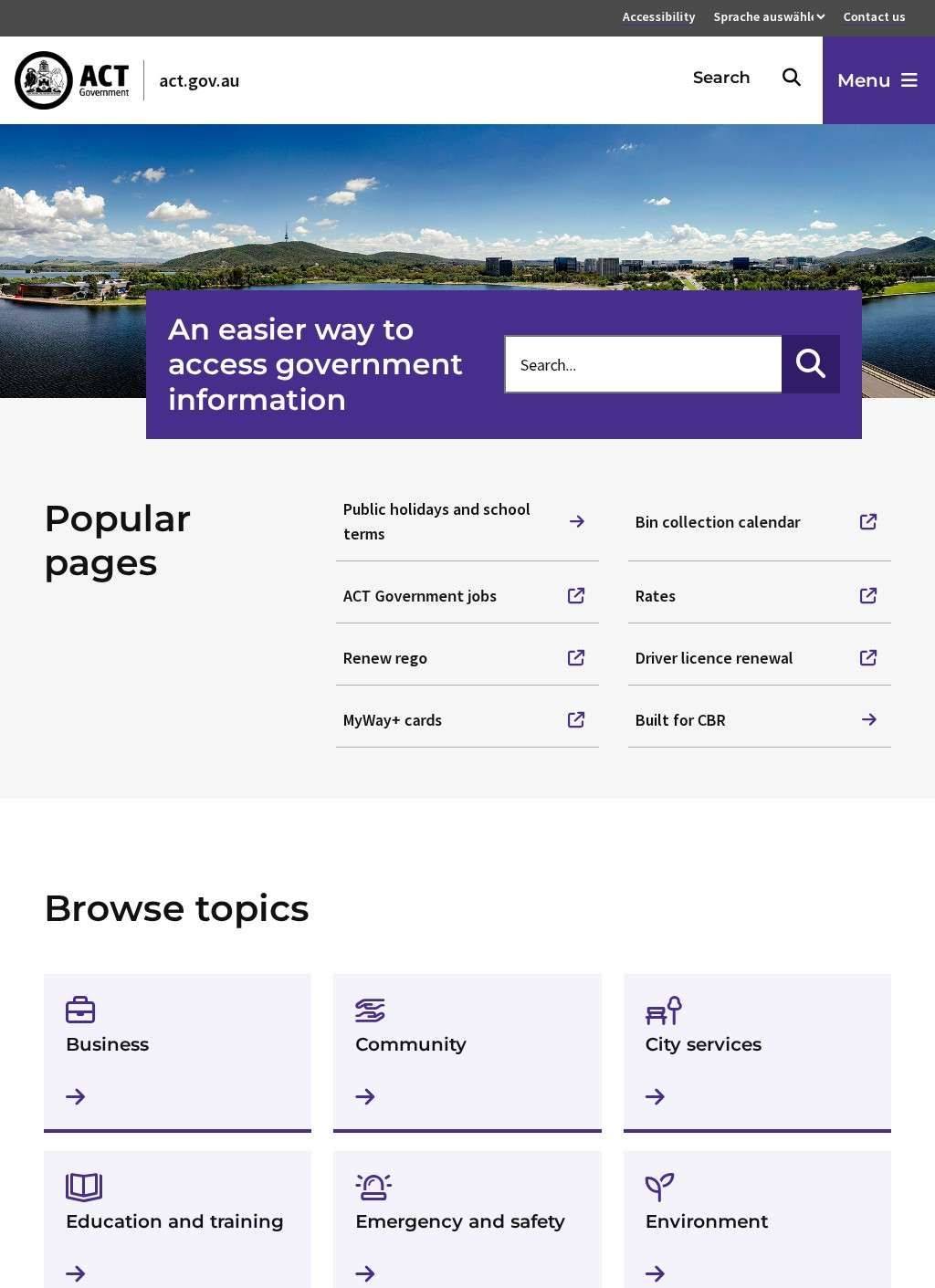The ACT Government website serves as the digital front door to one of Australia's most unique political entities - a territory that functions simultaneously as a city council for Canberra and a state-level government for the broader Australian Capital Territory. This dual role creates fascinating complexity in how services get delivered and how citizens engage with their government. Unlike other Australian jurisdictions, the ACT doesn't have separate local council and state government structures, meaning everything from garbage collection to major infrastructure projects flows through this single governmental entity.
The website's architecture reflects this comprehensive responsibility, organizing services across multiple domains including city services, community programs, education, emergency management, and business regulation. The city services section covers immediate practical needs like waste collection schedules, road closures, public transport updates, and park maintenance. During Canberra's construction-heavy periods (which seem almost constant given the city's growth), this section becomes crucial for residents trying to navigate around light rail construction, road upgrades, and building projects.
Education represents one of the ACT Government's largest responsibilities, and the website provides detailed information about public school enrollment, curriculum policies, and educational support services. The territory operates some of Australia's highest-performing public schools, and the website includes performance data, zone maps, and application processes that help families navigate the system. Tertiary education information connects users with Canberra's universities and vocational training providers, reflecting the city's role as an education hub.
Emergency services coordination takes on special significance in a territory that faces bushfire risks, severe weather events, and the unique security considerations that come with being the national capital. The emergency section provides current warnings, preparedness information, and response coordination details. During crisis events like the devastating 2003 bushfires that reached Canberra's suburbs, this website becomes a lifeline for residents seeking reliable information and safety guidance.
Business services occupy substantial digital real estate, reflecting the ACT Government's efforts to support economic diversification beyond public sector employment. The business section includes licensing information, development approval processes, and economic development programs. Small business operators can find grant opportunities, regulatory guidance, and networking resources. The territory's push toward becoming a startup and innovation hub shows up in dedicated resources for entrepreneurs and technology companies.
Environmental and sustainability initiatives receive prominent coverage, reflecting both community values and practical necessities in a territory surrounded by fragile bushland. Climate action plans, renewable energy programs, and urban forest management policies get detailed explanation. The ACT has committed to ambitious carbon neutrality targets, and the website tracks progress while providing ways for residents and businesses to participate in sustainability programs.
Community engagement features demonstrate the territory's commitment to participatory democracy. The "Have Your Say" section outlines current consultation processes, budget discussions, and policy development opportunities. Citizens can review planning proposals, contribute to budget priorities, and participate in various forums. This isn't just token consultation - the ACT's small size and engaged population mean that public input often influences policy decisions in measurable ways.
Health services information connects users with public hospital systems, community health programs, and mental health resources. The website includes waiting time data, service availability, and preventive health programs. During health emergencies like COVID-19, this section became central to public health communication and service coordination.
Planning and development information reflects ongoing tensions between growth management and heritage preservation in a city designed by Walter Burley Griffin over a century ago. Development applications, planning policies, and heritage protection measures get detailed coverage. Residents can track major projects, understand zoning regulations, and participate in planning processes that shape their neighborhoods.
The website includes comprehensive contact information organized by department and service type. Phone numbers, email addresses, physical office locations, and business hours help citizens connect with appropriate government services. Online services continue expanding, allowing residents to complete many transactions digitally rather than visiting physical offices.
News and media releases keep the community informed about policy developments, service changes, and government initiatives. These aren't just formal announcements - they include explanatory content that helps residents understand how decisions might affect their daily lives. Budget announcements, infrastructure updates, and policy changes get context that makes complex government operations more accessible to ordinary citizens.
The site maintains accessibility standards that ensure people with various disabilities can access government services and information. Screen reader compatibility, alternative text for images, and clear navigation structures reflect legal requirements and community expectations for inclusive digital government services in contemporary Australia.
